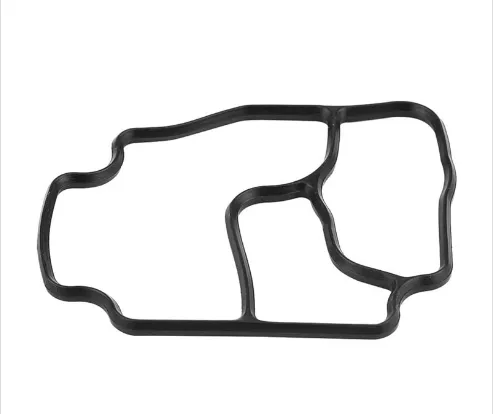Understanding the Importance of Rear Transmission Seal Maintenance for Vehicle Longevity
Understanding Rear Transmission Seals Importance and Maintenance
Rear transmission seals play a critical role in the overall functioning and efficiency of a vehicle's transmission system. These seals are designed to prevent transmission fluid from leaking out of the rear of the transmission case, ensuring that the transmission operates smoothly and effectively. Understanding the importance of these seals, as well as how to maintain them, can save vehicle owners from costly repairs and prolong the lifespan of their transmission.
What Are Rear Transmission Seals?
Rear transmission seals are typically made from rubber or other resilient materials that can withstand the harsh conditions inside an automotive transmission. They are located at the rear of the transmission assembly, sealing the output shaft that connects to the drive shaft. The primary function of these seals is to contain the transmission fluid, which lubricates the moving parts inside the transmission and aids in the proper functioning of the system.
Importance of a Functional Rear Transmission Seal
A properly functioning rear transmission seal is crucial for several reasons. Firstly, a good seal prevents fluid leaks, which can lead to a drop in transmission fluid levels. Low fluid levels can result in poor lubrication, causing increased wear and tear on the internal components. This can lead to overheating and, ultimately, transmission failure.
Secondly, a compromised rear transmission seal can lead to contamination of the transmission fluid. When dirt and debris enter through a damaged seal, it can cause the fluid to degrade, which compromises its ability to lubricate and protect the internal components. Contaminated fluid can lead to shifting problems and can decrease the overall performance of the vehicle.
rear transmission seal

Signs of Wear or Damage
Identifying issues with rear transmission seals early can prevent more severe problems down the line. Some common signs that a rear transmission seal may be failing include
1. Fluid Leaks Transmission fluid is typically red or brown; if you notice spots or puddles of this fluid underneath your vehicle, it may indicate a leaking seal. 2. Decreased Fluid Levels Regularly checking the transmission fluid level is essential. If it consistently drops, action should be taken to check for leaks. 3. Strange Noises Unusual sounds such as grinding or whining can indicate that the transmission is not receiving adequate lubrication due to fluid loss from a damaged seal.
4. Difficulty Shifting Gears If you find it increasingly challenging to shift gears smoothly, it could be tied to low fluid levels or fluid contamination stemming from a bad seal.
Maintenance and Replacement
Maintaining your vehicle's rear transmission seal is generally a matter of routine maintenance. Regular inspections and fluid changes can help ensure that your transmission stays in good working order. If a seal is found to be leaking or damaged, replacing it at the earliest opportunity is advisable. This replacement process typically involves removing the drive shaft, which can be complex. Therefore, many vehicle owners opt to seek professional assistance.
In conclusion, the rear transmission seal is a small yet essential component of a vehicle’s transmission system. Understanding its importance and recognizing the signs of wear can help prevent costly repairs and maintain optimal vehicle performance. Regular maintenance checks and timely replacements can significantly extend the life of your vehicle's transmission, ensuring a smooth and safe driving experience.
-
Simplifying Oil Changes: A Comprehensive Guide to Oil Drain Plugs and Their Variants
News Aug.04,2025
-
Mastering Oil Drain Maintenance: Solutions for Stripped, Worn, and Upgraded Oil Plugs
News Aug.04,2025
-
Fixing Oil Pan Plug Issues: Leaks, Stripped Nuts, and the Right Replacement Solutions
News Aug.04,2025
-
Everything You Need to Know About Oil Drain Plugs: Sizes, Fixes, and Upgrades
News Aug.04,2025
-
Choosing the Right Oil Drain Plug: A Guide to Sizes, Materials, and Drain Innovations
News Aug.04,2025
-
A Complete Guide to Automotive Drain Plugs: Types, Problems, and Innovative Solutions
News Aug.04,2025
-
The Ultimate Guide to Car Repair Kits: Tools and Essentials Every Driver Should Own
News Aug.01,2025
Products categories















